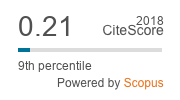Family Victim Advocates:
The Importance of Critical Job Duties
Mots-clés :
Advocates, Child advocacy centers, Sexual abuse, Children, Victims, FamiliesRésumé
Child advocacy centers across the United States intervened in more than 250,000 child abuse cases in 2011(National Children’s Alliance, 2012). Understanding the work of family victim advocates is imperative to helping children and families in child abuse cases. In this exploratory study, we surveyed advocates and program directors from child advocacy centers (CACs) across the United States to compare their perceptions of the critical job duties of family victim advocates. Data analysis revealed that CAC directors rated the importance of these duties significantly higher than family victim advocates. Results suggest the need for additional training to ensure that family victim advocates understand the importance of critical job duties to meet the needs of children and families in child abuse cases
Téléchargements
Références
between parent and child reports of parental supportiveness
and psychopathology of sexually abused children. Child &
Adolescent Social Work Journal, 5(3), 187-205.
Bull, E. C. R. (2006). Child witness support and preparation: Are
parents/caregivers ignored? Child Abuse Review, 15, 243-256.
Cross, T., Jones, L., Walsh W., Simone, M., & Kolko, D. (2007).
Child forensic interviewing in Children’s Advocacy Centers.
Child Abuse and Neglect, 31(10), 1031-1052.
Corcoran, J. (2002). The transtheoretical stages of change
model and motivational interviewing for building maternal
supportiveness in cases of sexual abuse. Journal of Child
Sexual Abuse, 11(3), 1-17.
Davies, E., Seymour, F., & Read, J. (2000). Children’s and primary
caretakers perceptions of the sexual abuse investigation
process: A New Zealand example. Journal of Child Sexual
Abuse, 9(2), 41-56.
Faller, K. C., Cordisco-Steele, L., & Nelson-Gardell, D. (2010).
Allegations of sexual abuse of a child: What to do when a
single forensic interview isn’t enough. Journal of Child Sexual
Abuse, 19, 572-589.
Gries, L.T., Goh, D.S., Andrews, M.B., Gilbert, J., Praver, F., &
Stelzer, D.N. (2000). Positive reaction to disclosure and
recovery from child sexual abuse. Journal of Child Sexual
Abuse, 9(1), 29-51.
Hackett, S. & Masson, H. (2005). Young people who have
sexually abused: What do they (and their parents) want from
professionals? Children & Society, 20, 183-195.
Haig, K., Perry, A.R., Hansen, D.J. (2005). The role of adult
expectations on the recovery of sexually abused children.
Aggression and Violent Behavior, 10(4), 475-489.
Heger, A., Ticson, Velasquez, O., & Bernier, R. (2002). Children
referred for possible sexual abuse: Medical findings in 2384
children. Child Abuse & Neglect, 26(6), 645-659.
Hill, S. (2005). Partners for protection: A future direction for child
protection. Child Abuse Review, 14, 347-364.
Jackson, S. L. (2004). A USA national survey of program services
provided by child advocacy centers. Child Abuse & Neglect,
28, 411-421.
Jenson, J. M., Jacobsen, M., Unrau Y., & Robinson, R. L. (1996).
Intervention for victims of child sexual abuse: An evaluation
of the children’s advocacy center model. Child and Adolescent
Social Work Journal, 13(2), 139-156.
Jones, L. M., Cross, T. P., Walsh, W. A., & Simone, M. (2007). Do
children’s advocacy centers improve families’ experiences of
child sexual abuse investigations? Child Abuse & Neglect,
31, 1069-1085.
Kouyoumdjian, H., Perry, A. R., & Hansen, D. J. (2009).
Nonoffending parent expectations of sexually abused children:
Predictive factors and influence on children’s recovery. Journal
of Child Sexual Abuse, 18(1), 40-60.
Koverola, C. (2007). Perpetuating mother-blaming rhetoric: A
commentary. Journal of child sexual abuse, 16(1), 137-143.
Lovett, B. B. (2004). Child sexual abuse disclosure: Maternal
response and other variables impacting the victim. Child and
Adolescent Social Work Journal, 21(4), 355-370.
Massat, C. R. & Lundy, M. (1998). “Reporting costs” to
nonoffending parents in cases of intrafamiliar child sexual
abuse. Child Welfare, 77(4), 371-388.
National Children’s Advocacy Center, Victim Advocacy Training
(2012). Retrieved from http://www.nationalcac.org/events/
va-training.html
National Center for Victims of Crime (2014). Statistics on
perpetrators of child sexual abuse. Retrieved from http://www.
victimsofcrime.org/media/reporting-on-child-sexual-abuse/
statistics-on-perpetrators-of-csa
National Children’s Alliance (2012). Membership Standards
Victim Support and Advocacy. Retrieved from http://www.
nationalchildrensalliance.org/index.php?s=76&cat=5
Newman, B. S., Dannenfelser, P. L., & Pendleton, B. S. (2005).
Child abuse investigations: Reasons for using child advocacy
centers and suggestions for improvement. Child and Adolescent
Social Work Journal, 22(2), 165-181.
Schewe, P. A. (2008). Direct service recommendations for children
and caregivers exposed to community violence and domestic
violence. Best Practices in Mental Health, 4(1), 31-47.
Shadoin, A. L. & Carnes, C. N. (2006). Comments on how child
protective services investigators decide to substantiate mothers
for failure-to-protect in sexual abuse cases. Child Sexual Abuse,
15(4), 83-95.
Smith, D. W., Witte, T. H., & Fricker-Elhai, A. E. (2006). Service
outcomes in physical and sexual abuse cases: A comparison
of child advocacy center-based and standard services. Child
Maltreatment, 11(4), 354-360.



